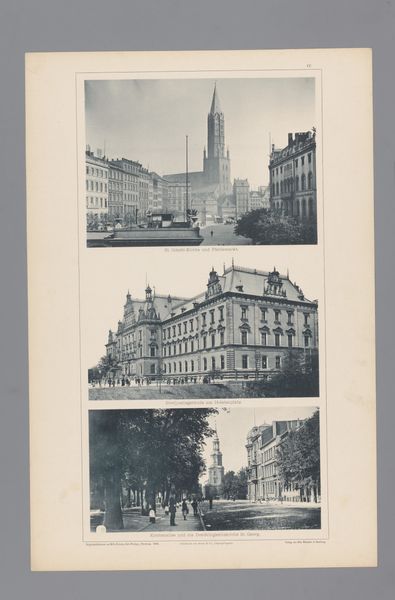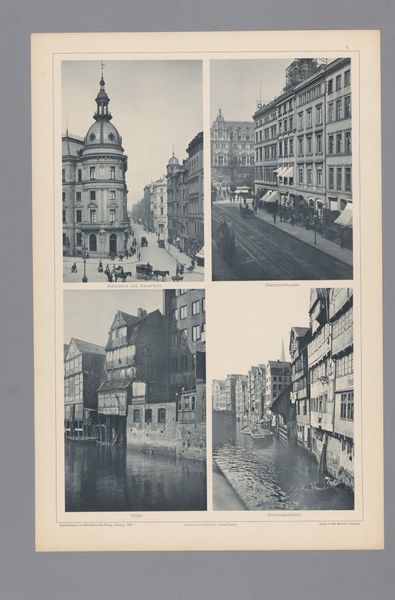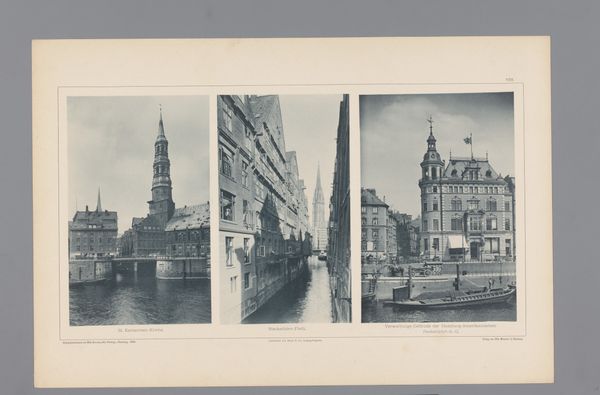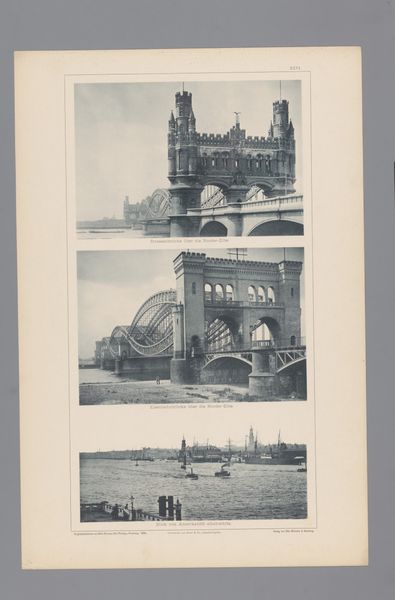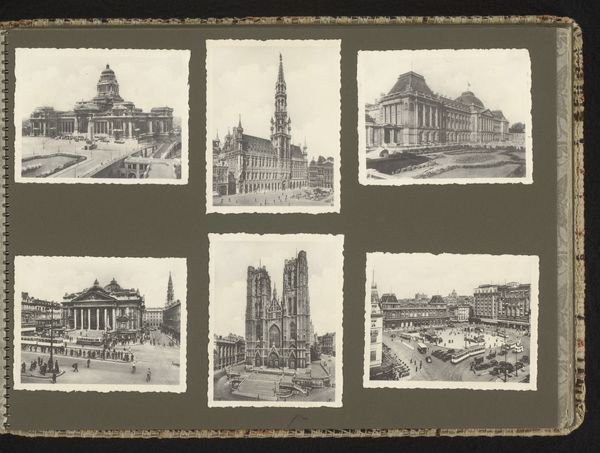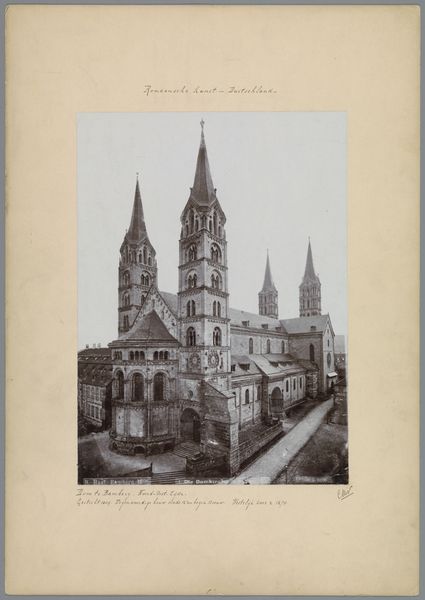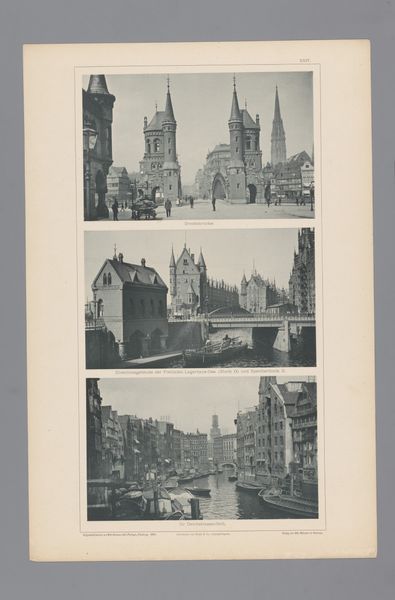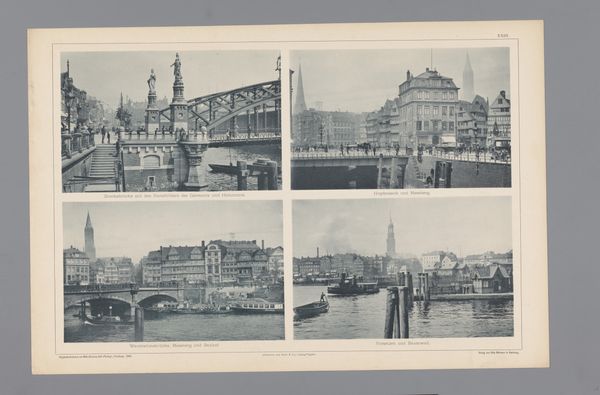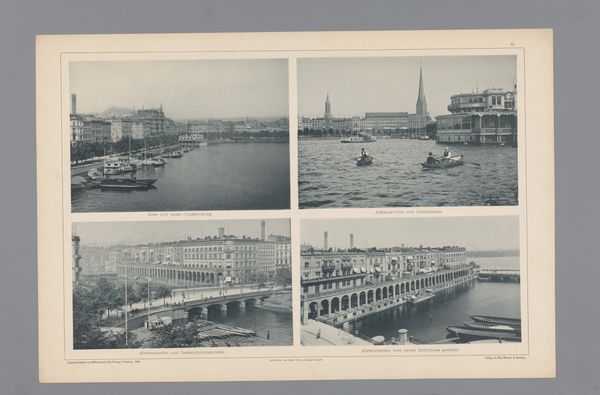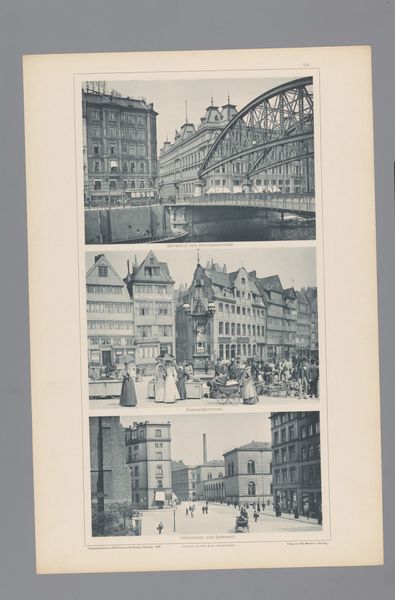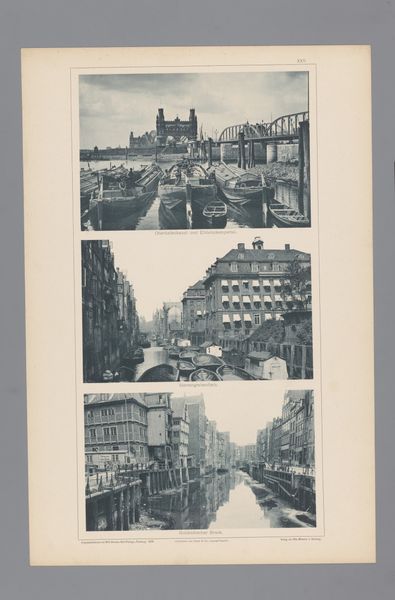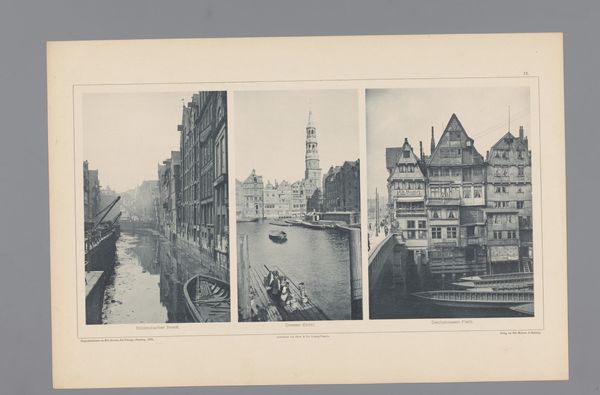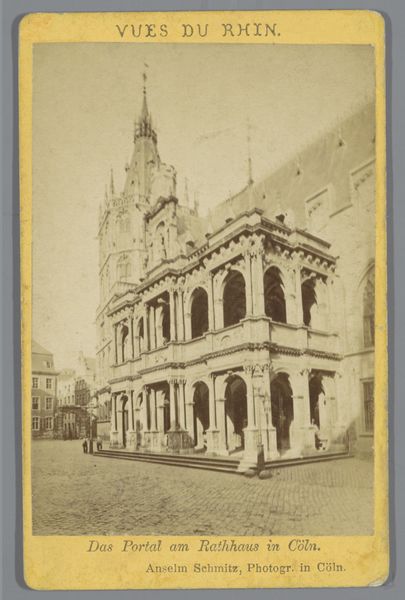
Vier gezichten op Hamburg, afgebeeld de Sankt Nikolaikirche, de Sint-Michielskerk, het Logenhaus en de Sint-Gertrudiskerk 1894
0:00
0:00
print, photography, albumen-print
#
pictorialism
# print
#
photography
#
cityscape
#
albumen-print
Dimensions: height 490 mm, width 330 mm
Copyright: Rijks Museum: Open Domain
Editor: Here we have Wilhelm Dreesen's "Vier gezichten op Hamburg," a photography print from 1894 showing four different views of Hamburg. I find it fascinating how the images are laid out; it feels like a visual directory of important city structures. What social narratives might this selection and ordering of architecture convey? Curator: That's an excellent entry point. By presenting these buildings together, Dreesen offers a portrait of Hamburg as a nexus of power. We see religious authority in the churches and civic authority in the Logenhaus. It begs the question: What does it mean to visually prioritize these institutions? Who gets left out of this "face" of Hamburg? Editor: So, it’s not just about architecture, but also about power dynamics being represented? Curator: Precisely. Consider how photography, as a relatively new medium at the time, could be employed to reinforce certain societal structures. These buildings are stoic and imposing; their presentation constructs a specific vision of order. Are we seeing a reflection of Hamburg or a construction *of* Hamburg through the lens of dominant ideologies? How might marginalized communities have viewed these symbols of established power? Editor: That’s really interesting, the idea of the image creating reality instead of just reflecting it. The uniformity in the printing across the different images – the greyscale – it suggests this cohesion and unity, when reality is perhaps more fragmented. Curator: Exactly! And within that alleged unity, there are always fissures and power differentials that can reveal so much about any given culture. So, what have you discovered reflecting on this art? Editor: I see it's not simply a collection of images; it's a statement about who holds power, and it prompts us to question whose stories aren't being told. Curator: Well articulated. This approach deepens our comprehension and acknowledges art’s vital intersection with society, encouraging meaningful interpretation of it.
Comments
No comments
Be the first to comment and join the conversation on the ultimate creative platform.
